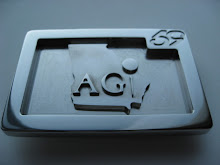
Pictured: Ashley L. Davis
By: B. J. Hathaway, G.S.E.B, M.C.I.
Everyone wants to hit the ball further. Everyone. I’m fairly certain the club manufacturers know this, and they have ways to tweak our drivers to make them go further. One simple change is to make the club longer which is supposed to make your golf ball go further. But, as in most things in life, we have the law of diminishing returns to contend with.
Expert club builder Tom Wishon notes that the standard driver length on the PGA Tour is 44.5″. Now, go to your local golf shop or online site and just see if you can find a new driver under 45″ long. I’m betting you may need a golf detective to find one. The standard new driver is between 45″-46″. The problem is, drivers are getting longer but you’re not getting taller! You are probably thinking, “hey, I’m skilled enough to swing whatever they are selling. I got game!”
I’m betting that unless you’re a Pro you:
a. don’t practice 4 hours a day
b. don’t also play 3 times a week
c. have bills to pay or other obligations
So the professionals are playing a shorter driver than you, but hitting it further and straighter. Besides skill level, what is their secret? It’s called center face contact and it’s kind of a big deal! All things being equal, on center hit = faster ball speed = longer drives.
My suggestion for the majority of us who are mere mortals when it comes to golf ability:
Find a launch monitor and experiment with different driver lengths until you find one that you can hit on-center. You will hit the ball further with the same effort, what a pleasant surprise.
Learn to hit the ball better and be bigger than your driver!
AGI
Improve your game







